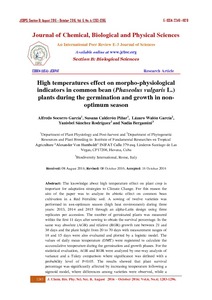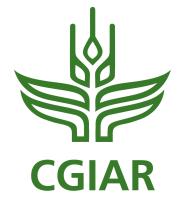Resource information
The knowledge about high temperature effect on plant crop is important for adaptation strategies to Climate Change. For this reason the aim of the paper was to analyze its abiotic effect on common bean cultivation in a Red Ferralitic soil. A sowing of twelve varieties was performed in non-optimum season (high heat environment) during three years: 2013, 2014 and 2015 through an alpha-Latin design using three replicates per accession. The number of germinated plants was measured within the first 11 days after sowing to obtain the survival percentage. In the same way absolute (AGR) and relative (RGR) growth rate between 21 and 30 days and the plant height from 20 to 70 days with measurement ranges of 10 and 15 days were also evaluated and plotted by a logistic model. The values of daily mean temperature (DMT) were registered to calculate the accumulative temperature during the germination and growth phases. For the statistical evaluation, AGR and RGR were analyzed by one-way analysis of variance and a Tukey comparison where significance was defined with a probability level of P<0.05. The results showed that plant survival percentage was significantly affected by increasing temperature following a sigmoid model, where differences among varieties were observed, while a prediction of survival behavior was also carried out for extreme values of temperature. The model corroborated that DMT above 28 ?C decreases the survival percentage until values less than 30%. On the other hand the most sensible varieties in the germination stage showed a higher relative growth rate which contributes for understanding the physiological effect of thermal stress in common bean plants.


